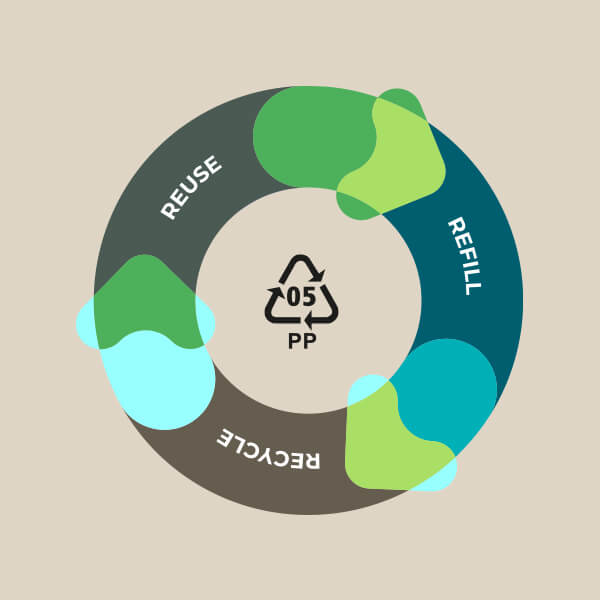Shut up, bacteria! How disturbed communication might solve the problem of antibiotic resistance.


Author:
Dr. Valeria Scagliotti
Sustainability Consultant for Life Sciences at SustainLABility
Key topics: Sustainability, Environmental Footprint, Climate Change, IPCC Report, Greener Future
Category: Sustainability
Date: 10/10/2022
Support science to put bacteria to silence.
“Hey, guys, what are you up to?” says one bacterium. “Not much”, replies another. “I have an idea” proposes the third, “let’s meet some friends, hang out, and do some mischief.” Sounds like a lame joke, but it’s closer to reality than we think. Bacteria communicate with each other.
The fact that bacteria communicate somehow has been known for quite some time now, but we didn’t know much about how they communicate. American microbiologists, Bonnie L. Bassler and Michael R. Silverman, found out more about ‘talking’ bacteria in the course of their research.
Bacteria communicate to execute plans with the help of their “community”.
Their study results even conclude that we might be able to get rid of antibiotics once and for all – since there might be no need to kill bacteria anymore when all we have to do is disturb their communication. For their study, Bassler and Silverman received the renowned Paul-Ehrlich- and Ludwig-Darmstaedter-prize for outstanding achievements in medicine.
But why do bacteria communicate in the first place? Actually, the answer comes close to the talking bacteria joke. They communicate to agree upon processes whose execution wouldn’t make sense for singular cells. Briefly speaking: bacteria arrange a meeting within a group to execute a certain process. To do some damage to their host, for instance.
By quorum sensing bacteria can determine how many of their kind are close to them.
Now back to the research on how bacteria communicate: Bacteria determine how many conspecifics are close to them by exchanging signals. This microbial communication is called “quorum sensing”. Put another way, it is a chemical based communication between unicellular organisms by signal molecules.
This phenomenon was discovered by scientists in 1970 when they examined the bioluminescence (the production and emission of light by a living organism) of a bacterium called ‘Vibrio fischeri’ that lives in a symbiosis within the photophore of deep-sea fishes. At high concentrations, the bacteria causes a light effect. The symbiosis is created by the exchange of the bacteria’s light and the biotope of the host.
Bacteria know exactly when the time is right to attack.
In general, quorum sensing coordinates how bacteria of a certain kind behaves in small spaces. These manners can change within the scope of communication. At low concentrations, the bacteria might be unharmful to their host. When the concentration increases, they switch their manner and attack. That’s pretty wicked, isn’t it?
But it does make sense for them, as in low concentrations they would risk being intercepted and killed by the immune system of the host. By using the technique of quorum sensing – by talking to each other, so to speak – they can recognize when the optimum concentration is reached and thus, the perfect time to attack.
Antibiotics? No problem for hospital bugs. They just arrange to produce a protecting biofilm.
Now, here comes an example of germs that many people are very afraid of: hospital bugs. With the help of quorum sensing, bacteria can cause a gene expression such as the production of toxins and further virulence factors. Thereby, the hospital bug ‘pseudomonas aeruginosa’, for instance, produces a biofilm that protects the bacteria from the immune system of their host and from antibiotics.
Do you want to know how gene expressions work? Sure, here’s the answer in a nutshell: gene expressions are caused in a quite complex process. So-called autoinducers (signaling molecules) diffuse from the bacteria to their environment. Once a certain concentration is reached and thus a certain threshold is exceeded, the autoinducers activate intracellular acceptors by binding themselves onto them.
Let’s support science – to put bacteria to silence.
By the way, there are several kinds of autoinducers. Some are used for intraspecific communication and some for interspecific communication. That means even different bacteria species can communicate with each other. In our human interaction, we would probably call this “intercultural communication”. This way of communication truly shows that bacteria are social creatures who talk to each other to secure their survival.
And here comes our optimistic outlook for the future. As we now know more about how bacteria communicate, we can learn how to disturb their communication – and thereby, render bacteria completely harmless. When they can't communicate in order to arrange an attack on their host, there is no need to kill them anymore. Hence, there is no need for antibiotics and the problem of antibiotic resistance is finally solved.
So let’s keep on supporting science – and silence bacteria.
Tips and more.


The Starlab Green Mission.
Discover Starlab's tips, products and services on the subject of sustainability. Get to know our Green Team. We look forward to a joint #EcolutionMovement.
Podcast: Sustainability in laboratories.
Klaus Ambos, CEO of the Starlab Group, dives deep into the topic with our guest Nikoline Borgermann aka Avasustain – a biochemist and environmentalist.






